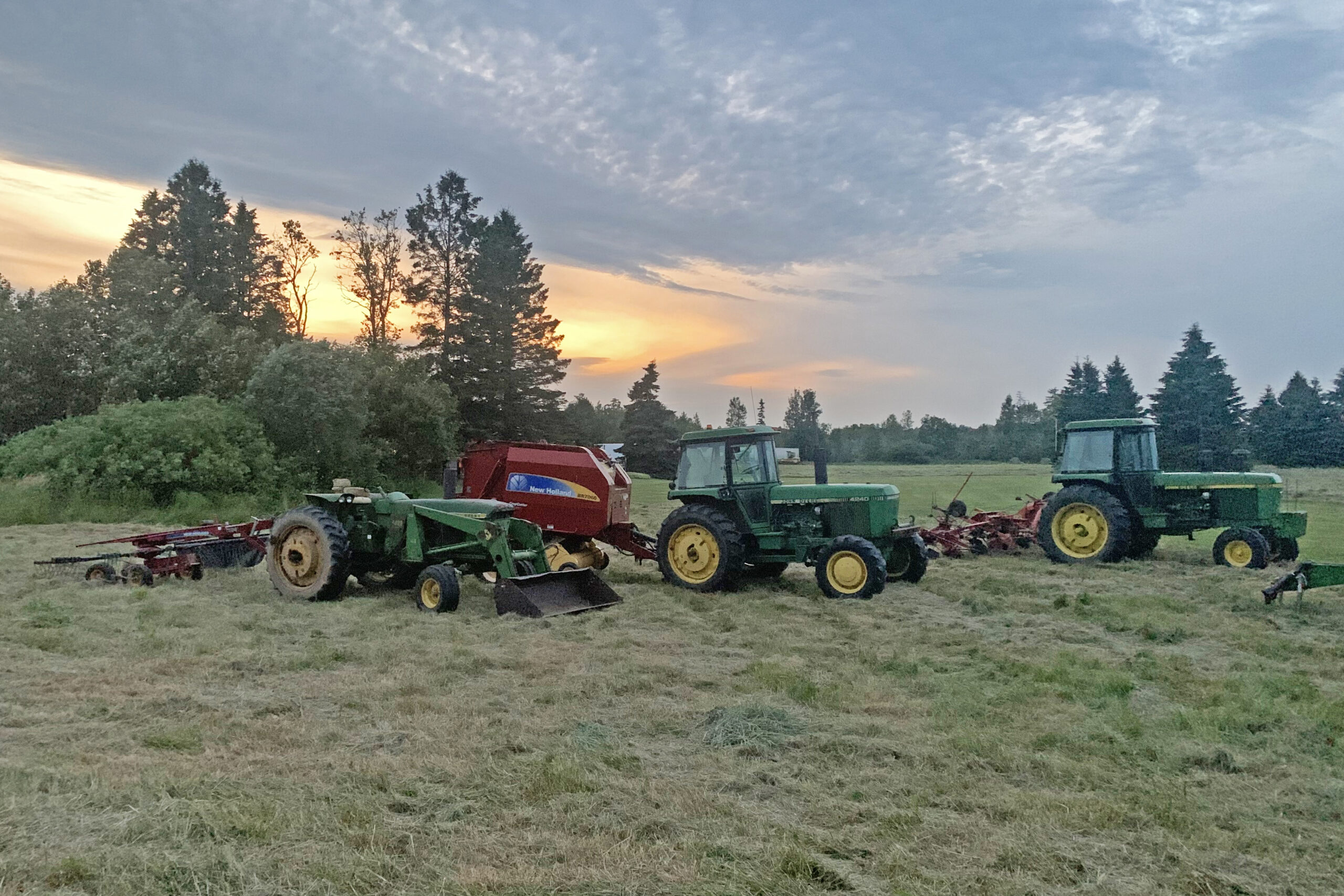
With northern Maine in the middle of a drier 2024 growing season, farmers are breathing a bit easier than they were a year ago.
In 2023, unrelenting rain soaked fields from planting through harvest, threatening potatoes and cutting hay crops in half.
Thanks to favorable weather, growers are already pulling in their first hay harvest, and the outlook for potatoes is promising. Last year Maine produced 231,000 tons of hay, 37,000 tons less than in 2022, and 10 million pounds fewer potatoes than the previous year. A good growing season will help recover those losses.
But there’s one thing to watch out for: As the potato plants are thriving early, so are the bugs that like to eat them, said University of Maine Cooperative Extension leaders.
“The weather has been excellent for potato growth thus far, but it has also allowed for earlier insect activity,” crop specialists wrote in a grower newsletter on June 28.
Hay and potatoes are among Maine’s most important crops, with potatoes at No. 1 and hay third. Spuds had a value of $291.5 million last year, according to the United States Department of Agriculture’s 2023 state agriculture overview. Blueberries were next at $44.5 million, and hay was valued at just under $39 million.
Sean McAuley, potato scouting coordinator, integrated pest management specialist James Dill, potato pathologist I. Kutay Ozturk and pest specialist Griffin Dill issue the Potato Pest Alert weekly throughout the growing season, with recommendations for treating pests and diseases.

Potato scouts in Aroostook and central Maine have reported aphids are present in moderate numbers and Colorado potato beetles are active in all areas, according to the most recent installment on July 3.
Colorado beetles are a problem because they eat potato leaves, according to an Extension fact sheet. They can also develop resistance to pesticides, and a female can lay up to 800 eggs. Though the beetles present challenges, growers can reduce their numbers using crop rotation, mulching and insecticides.
As of July 3, no potato diseases were present and excellent growing conditions were producing vigorous potato plants, the specialists said. They advised growers to watch closely for aphids and to treat preemptively for late blight with fungicide.
Aroostook County hay farmers are already pulling in their first harvest.
“The growing conditions have been superb. We’re probably two or three weeks ahead of schedule,” said Cody Tompkins of The County Hay Company in Easton, who has grown hay for about six years. “It’s by far the best growing conditions I’ve seen since I’ve been farming.”
Tompkins typically grows about 300 acres of timothy and clover, producing 600-pound round bales, square bales and some straw in the fall. He sells to customers in Aroostook and Penobscot counties.
This year they’ll also add some alfalfa for silage, which is sold in 1,000-pound wrapped bales — the ones that look like big marshmallows, Tompkins said.
So far they’ve cut 30 acres that are ready to bale. With better weather, the hay has a chance to dry properly before baling. Dry hay bales need to have 14 percent or less moisture, Tompkins said. Silage, which is sealed and used as livestock feed, is packed with about 50 percent moisture.
Lucerne Farms of Fort Fairfield left fields unharvested last year because they were too wet, said company president Richard James. This season has been a welcome change.
“Because it’s not raining every day it’s certainly making it easier,” he said. “I don’t see a shortage in this year’s crop. It looks so much better than last year’s.”
Lucerne has been in business for 35 years and also grows about 300 acres. The company produces 5,000 to 6,000 tons a year in round and square bales, as well as packaged hay blends for livestock and garden use.
The products go to customers in Maine and nationwide, including Hawaii, James said.
Hay growers typically get two crops each season. Last year they had a hard time cutting once, but Tompkins and James said they’ll have no trouble bringing in two harvests this year. Both were enjoying cutting hay from dry fields.
“It is actually rather enjoyable when it’s 80-plus degrees,” James said. “It makes it way easier to do what we do.”







